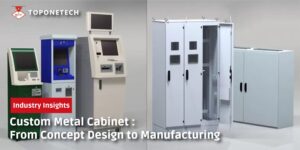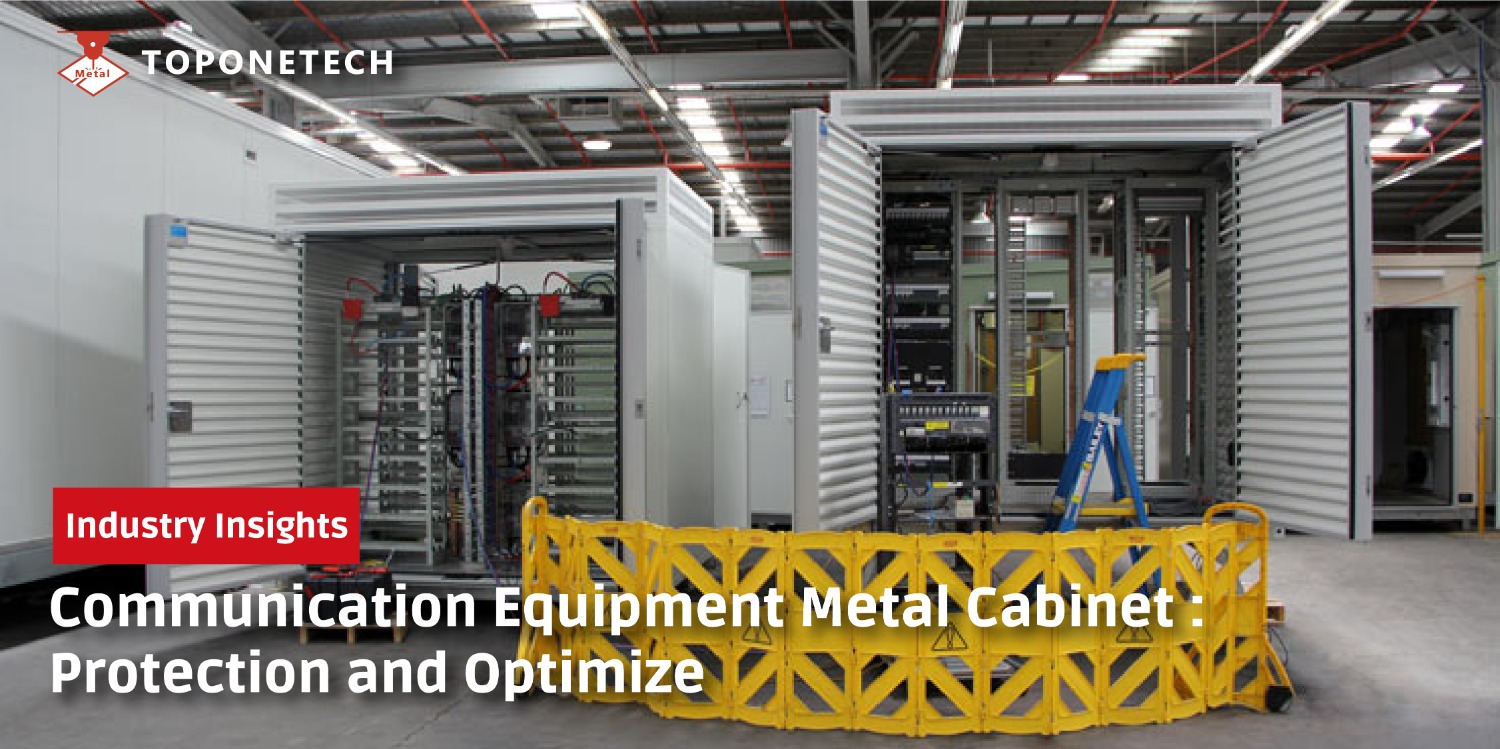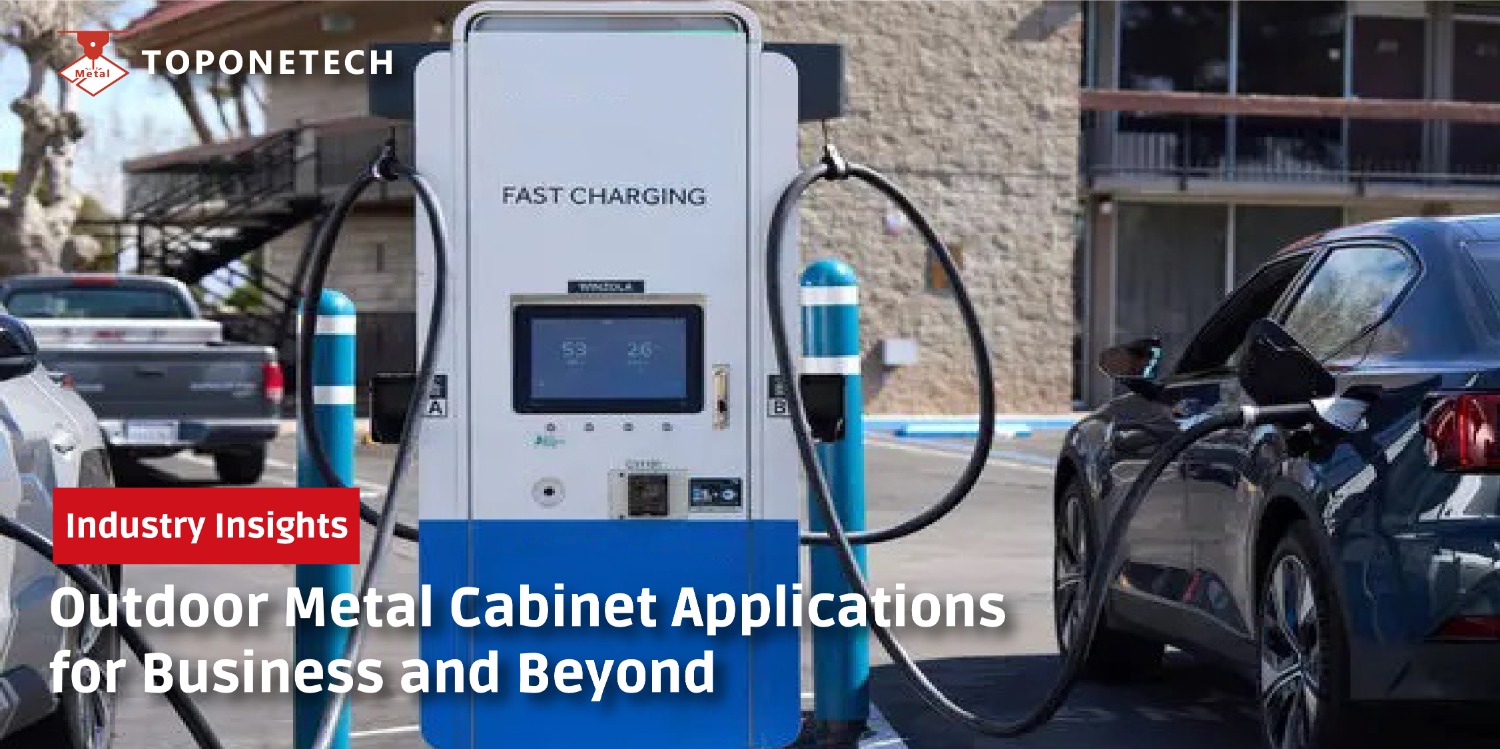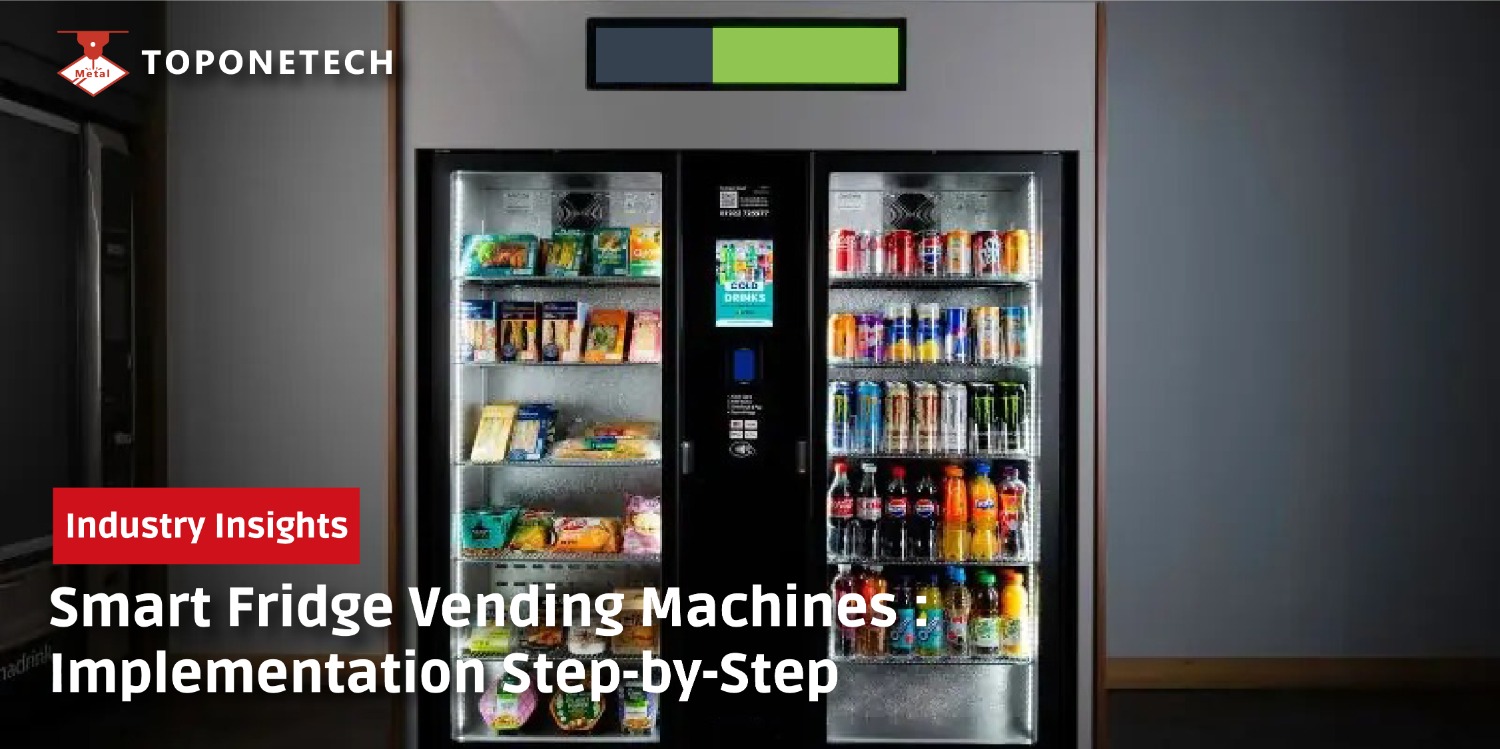
Custom metal cabinets are essential for industries like self-service kiosks, gaming machines, and vending machines. These durable, secure enclosures offer a tailored solution for housing technology, providing both functionality and aesthetics. Whether in retail, entertainment, or hospitality, custom metal cabinets ensure your machines are protected, well-organized, and visually appealing, while being built to withstand high-traffic environments. In this article, we’ll guide you through the entire process of creating a custom metal cabinet—from concept design to manufacturing.
Why Choose Custom Metal Cabinet?
Custom metal cabinets offer a range of advantages over standard, off-the-shelf options. First and foremost, customization allows for tailored design and functionality to meet specific requirements. Whether you’re dealing with limited space, unusual dimensions, or specific security needs, a custom-built cabinet can be engineered to provide the perfect solution.
Additionally, metal cabinets are known for their durability and strength. Unlike wooden or plastic alternatives, metal cabinets are resistant to wear and tear, making them an ideal choice for heavy-duty storage. They also offer aesthetic versatility, with various finishing options available to match any décor.
Custom Metal Cabinet – Understanding the Concept Design Phase
The design process of a custom metal cabinet begins with an in-depth understanding of the client’s needs. Every detail, from size and shape to functionality and appearance, must be carefully considered.
The conceptualization phase for creating custom metal cabinets for self-service kiosks, gaming machines, and vending machines is a crucial step that sets the foundation for a successful product. This phase involves understanding the specific requirements of each industry, the environment where the cabinet will be used, and the unique functionalities needed by the end-users.
1. Industry Research and User Needs
The first step in conceptualization is researching the industry-specific needs. Self-service kiosks may prioritize user accessibility, durability, and a sleek, modern design to match the aesthetics of retail or public spaces. Gaming machines might require a focus on security features, display integration, and ergonomic user interaction. Vending machines, on the other hand, need a design that allows for ease of restocking, temperature control (for food or beverages), and maintenance access.
2. Functional Requirements
Once the industry needs are identified, the next step is outlining the functional requirements. This includes determining the cabinet’s dimensions, material strength, load capacity, and access points for both users and service personnel. For instance, a self-service kiosk may need multiple compartments for technology components like touchscreens, payment terminals, printers, and wiring. Meanwhile, a gaming machine might require a space for cash handling systems, LED displays, and intricate wiring that needs to be secured yet easily accessible for repairs.
3. Design Flexibility and Aesthetic Considerations
The appearance of the custom metal cabinet plays a significant role in branding and user experience. During the conceptualization phase, it’s important to balance aesthetics with functionality. The design should reflect the brand image of the business while ensuring that the cabinet can withstand wear and tear from frequent use. Features like color schemes, surface finishes, and branding elements are discussed to create a visually appealing yet practical product.
4. Integration with Technology and Components
The cabinet’s design must be compatible with the various technological components it will house. In this phase, engineers work closely with technology suppliers to ensure seamless integration. This involves planning for ventilation, cable management, and component housing, as well as ensuring that the cabinet allows for smooth operation of features like touchscreens, payment systems, or product dispensers. For gaming machines, this might include spaces for coin acceptors or card readers, while vending machines may need refrigerated compartments or specialized slots for product dispensing.
5. Safety and Compliance
Ensuring that the custom metal cabinet meets industry safety standards and regulatory requirements is another key aspect of the conceptualization phase. Cabinets need to be designed with user safety in mind, incorporating features like rounded edges, secure locking systems, and fire-resistant materials where necessary. For certain environments, such as hospitals or public transit stations, adherence to strict health and safety codes is vital.
6. Prototyping and Feedback
After initial concepts are drafted, prototyping may occur to test the design’s functionality and effectiveness. This phase often involves creating mock-ups or 3D models to visualize the cabinet in real-world settings. Feedback from clients and industry experts is essential to refine the design, ensuring it meets both operational and aesthetic goals.
Custom Metal Cabinet – Material Selection for Metal Cabinets
Choosing the right material is critical in the design and manufacturing of custom metal cabinets. The material must align with the intended use, budget, and aesthetic preferences of the client.
Common Materials Used in Custom Metal Cabinet
1. Steel
Steel is one of the most widely used materials for custom metal cabinets due to its strength, durability, and cost-effectiveness. It can endure heavy use and harsh conditions, making it ideal for high-traffic areas like retail locations, public spaces, or gaming venues. Steel can also be powder-coated to improve corrosion resistance and enhance its appearance.
- Cold-Rolled Steel: This type of steel is commonly used for indoor applications. It has a smooth surface finish and is highly formable, making it ideal for precise manufacturing processes.
- Stainless Steel: Known for its corrosion resistance, stainless steel is used in environments where moisture, humidity, or harsh cleaning chemicals are present, such as vending machines placed outdoors or in food service areas. It also provides a sleek, professional finish, which is essential for machines in customer-facing environments.
2. Aluminum
Aluminum is a lightweight, corrosion-resistant material often used when weight reduction is important, such as in portable or easily movable self-service kiosks. Manufacturers find it highly malleable and easy to shape into various forms, making it suitable for more intricate designs. Although not as strong as steel, it is still durable enough for most indoor applications and some outdoor uses.
- Anodized Aluminum: This material undergoes an electrochemical process that increases its corrosion resistance, making it more suitable for outdoor use or environments that require frequent cleaning.
3. Galvanized Steel
Manufacturers coat steel with a layer of zinc to create galvanized steel, preventing rust and corrosion. It is commonly used for outdoor cabinets or in environments where the machine will be exposed to moisture, such as vending machines or outdoor kiosks. Galvanized steel provides excellent durability and protection against the elements, making it ideal for long-term use in various weather conditions.
4. Carbon Steel
Manufacturers use carbon steel for custom metal cabinets when they require a balance of strength and affordability. It’s more susceptible to corrosion than stainless steel, so it often requires a protective coating or paint finish. It is favored in applications where the cabinet will not be exposed to excessive moisture or harsh chemicals.
5. Composite Metal Alloys
In some cases, manufacturers use composite metal alloys to combine the benefits of different materials. For example, manufacturers may create a cabinet with a steel frame for strength and use aluminum or plastic components to reduce weight or improve aesthetics. These alloys offer flexibility in design and allow for cabinets that meet specific operational or environmental needs.
6. Brushed Metal Finishes
Manufacturers often apply brushed metal finishes to steel or aluminum to give the cabinets a more premium, sleek appearance. The brushed texture helps hide fingerprints and minor scratches, making it a popular choice for high-end kiosks and gaming machines placed in luxury environments like casinos.
7. Powder-Coated Metals
Powder coating is a finishing process applied to metal surfaces to provide a durable, protective layer that resists chipping, scratching, and fading. It is available in various colors and textures, allowing customization based on brand or aesthetic preferences. This is particularly useful for creating visually appealing kiosks or vending machines that align with a business’s branding while also adding a layer of protection.
Manufacturing Process of Custom Metal Cabinet
Once the manufacturer’s team finalizes the design and selects the materials, they begin the manufacturing process. This is a multi-step process that involves several key techniques to ensure the cabinet is both functional and visually appealing.
Cutting and Shaping
The first step in manufacturing a metal cabinet is cutting the raw material to size. Manufacturers commonly use laser cutting and water jet cutting for precision, allowing them to achieve complex shapes and designs.
Once the manufacturer’s team cuts the pieces, they shape and form them using techniques such as bending or stamping. These methods help create the cabinet’s structure, ensuring it can support the required weight and meet the design specifications.
Welding and Assembly
After cutting and shaping, the manufacturer’s team welds the individual components together. Welding ensures the structural integrity of the cabinet, making it strong enough to withstand heavy use. Depending on the design, the manufacturer may use rivets or screws to secure certain parts.
Once welded, the manufacturer’s team assembles the cabinet by adding shelves, doors, and other elements. This stage is crucial to ensure that all parts fit together seamlessly.
Finishing Techniques
The finishing process is what gives the cabinet its final look. You can finish metal cabinets in a variety of ways, depending on the client’s preferences. Some popular finishes include powder coating, painting, and galvanization. Each finish offers different benefits, such as improved corrosion resistance or enhanced aesthetics.
Benefits of Custom Metal Cabinet
There are numerous benefits to opting for a custom metal cabinet over a pre-made one. Let’s take a closer look at some of these advantages.
Durability and Longevity
People know metal cabinets for their strength and durability. Unlike wood, which can warp or crack over time, metal remains strong and resilient, even in harsh environments. This makes metal cabinets a long-lasting investment.
Customization and Versatility
You can design a custom metal cabinet to meet specific needs. Whether you require extra security features, specialized compartments, or a unique size to fit a particular space, customization offers endless possibilities.
Aesthetic Appeal
You can finish modern metal cabinets in a range of styles to match any décor. From sleek, minimalist designs to industrial looks, metal cabinets offer both functionality and aesthetic appeal, making them ideal for both homes and businesses.
Applications of Custom Metal Cabinet
People use custom metal cabinets in a wide variety of settings. Let’s explore some of the most common applications.
Custom Metal Cabinet for Self-Service Kiosk
Businesses now commonly place self-service kiosks in airports, retail stores, restaurants, and healthcare facilities, providing customers with an easy way to access information or complete transactions independently. Custom metal cabinets play a crucial role in ensuring these kiosks are functional, secure, and visually appealing.
Key Benefits of Custom Metal Cabinet for Self-Service Kiosk:
- Durability and Security: These kiosks often handle sensitive payment information and face constant use. Custom metal cabinets provide a sturdy, secure housing that protects internal components, such as touchscreens, card readers, and printers, from tampering or damage.
- Weather Resistance: Many businesses place self-service kiosks outdoors, such as at parking lots or transportation hubs. Metal cabinets, particularly when finished with corrosion-resistant coatings, are ideal for protecting kiosks from harsh weather conditions.
- Custom Design: Manufacturers can create custom metal cabinets to accommodate various hardware components, ensuring a sleek, integrated look while allowing easy access for maintenance and upgrades.
Casino Gaming Machine Metal Cabinet
Gaming machines in casinos or entertainment centers need to be both attractive and highly durable. A well-designed metal cabinet is essential for protecting the internal electronics and components of these machines while ensuring a visually engaging exterior that enhances the gaming experience.
Key Benefits of Custom Metal Cabinet for Casino Gaming Machine:
- Aesthetic Customization: The gaming industry drives visuals. Manufacturers can create custom metal cabinets with unique shapes, finishes, and integrated lighting, making the machines more engaging and attractive to players.
- Security and Tamper Resistance: Casinos require heightened security for gaming machines. Custom metal cabinets offer enhanced protection, with reinforced locks and tamper-resistant features to safeguard cash and internal components.
- Modularity: Manufacturers can create metal cabinets for easy upgrades or changes, allowing casino operators to modify gaming machines without replacing the entire structure.
Vending Machine Metal Cabinet
People often choose custom metal cabinets for vending machines, especially in locations with heavy use or environmental challenges. Whether selling snacks, beverages, or electronics, the cabinet’s design plays a key role in ensuring the machine’s durability and functionality.
Key Benefits of Custom Metal Cabinet for Vending Machine:
- Strength and Longevity: Vending machines often handle frequent use and heavy products. Custom metal cabinets provide the structural integrity needed to support internal storage mechanisms and safeguard the machine from wear and tear.
- Weather Protection: Vending machines located outdoors benefit from metal cabinets that resist rust, corrosion, and other weather-related damage. This ensures that the machine remains operational in any climate.
- Custom Configurations: Vending machines have unique internal storage requirements depending on what they dispense. You can tailor custom metal cabinets to optimize storage space, ensure proper temperature control, and provide easy access for refilling and maintenance.
Conclusion
In conclusion, the journey from concept design to manufacturing a custom metal cabinet is an intricate process that involves careful planning, expert craftsmanship, and a keen eye for detail. Moreover, by understanding each stage—from design to material selection and finishing—you can create a cabinet that perfectly meets your needs.
Whether for self-service kiosk, gaming machine, or vending machine, a custom metal cabinet offers unmatched durability, functionality, and aesthetic appeal. If you’re considering investing in a storage solution, exploring the world of custom metal cabinets is a great way to ensure you get exactly what you need.
Top One Tech can customize various types of Custom Metal Cabinet, specially designed for your application scenarios.
Contact us for further information :
Whatsapp/Call us at : +86 13631610695
Email : sales@toponetechmetal.com
See Also : Our Wide Range of Sheet Metal Products



